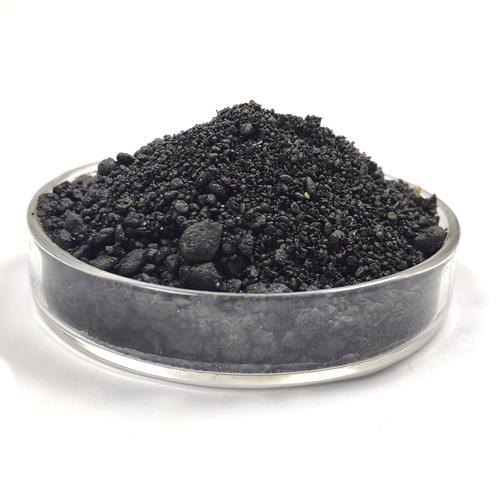
The refractory ramming material is prepared from a high proportion of granular and powdery materials and a very low proportion of binders and other components, even all of which are composed of granules and powders, and are subject to strong ramming. Bulk materials for construction.
Ramming material for blast furnace
The refractory ramming material is prepared from a high proportion of granular and powdery materials and a very low proportion of binders and other components, and even all of them are composed of granules and powders. Bulk materials for construction.
Because the material is mainly used for the direct contact with the molten material, it is required that the granular and powdery materials must have high volume stability, compactness and corrosion resistance, and the induction furnace should also have insulation.
Compared with other unshaped refractories of the same material, the ramming material is dry or semi-dry and loose, and a dense structure is obtained by strong ramming. Only when heated to a sintering degree, the combined body material has strength.
After the ramming material is formed, different heating methods can be adopted to promote its hardening or sintering according to the hardening characteristics of the mixture. If it contains inorganic chemical binder, it will harden on its own.
It can be demolded and baked after having a considerable strength; if it contains a thermoplastic carbon mixture, it will be demolded after cooling to have a considerable strength, and it should be heated quickly before use to make it coking; and it does not contain a binder that hardens at room temperature, often after tamping. Sintered with die row.
|
item |
GT-1 |
GT-2 |
GT-3 |
|
|
Al2O3 |
60 |
58 |
58 |
|
|
Sic+C |
20 |
13 |
12 |
|
|
Bulk density(g/cm3)≥ |
110℃×25h |
2.35 |
2.30 |
2.40 |
|
Line rate of change% |
1450℃×3h |
±0.5 |
±1.0 |
±0.8 |
|
Compressive strength |
110℃×24h |
5 |
10 |
10 |
|
1450℃×3h |
35 |
20 |
1.5 |
|
|
use |
Small blast furnace main trench working layer |
Small blast furnace branch trench working layer |
No-bake ramming material |
|
The use and characteristics of ramming material:
For small blast furnace tapping system with only single tap hole or local emergency repair of large and medium blast furnace tapping system, the ramming materials listed in the above table can be used.
Among them: GT-3 is a non-baking ramming material, which adopts a new type of combination system, which does not generate water vapor during the use process, so that the iron can be directly tapped after ramming construction without any test. Thereby improving the operation of the equipment; the purpose of efficiency.
It can be widely used in the main ditch of the tap ditch of medium and small blast furnaces and all parts of the tap ditch that need to be fast.
YY Refractory supplies premium-grade ramming material (ramming mass) for blast furnaces. Heat-resistant, erosion-proof, and easy to apply. Boost furnace longevity & efficiency. ISO-certified. Get a quote today!
High alumina refractory bricks are the backbone of high-temperature industrial processes. By understanding their properties, applications, and supplier selection criteria, businesses can enhance operational efficiency and reduce downtime. For industries seeking durable, cost-effective solutions, partnering with certified refractory materials suppliers in China ensures access to cutting-edge technology and reliable supply chains.
Silica bricks for coke ovens are siliceous refractory products used for building coke ovens with tridymite as the main crystal phase. Coke oven silica bricks are used to build regenerator walls, ramps, combustion chambers, carbonization chambers and furnace roofs of coke ovens. Silica brick is an acid refractory material with good resistance to acid slag erosion. The softening temperature under load is as high as 1640-1670 °C, and the volume is relatively stable in long-term use at high temperature.
Ceramic wear resistant castable is a special material and is a new type of material developed recently. It not only meets the needs of national defense cutting-edge products and high-tech development, but also meets the requirements of the rapid development of the national economy. Therefore, it is easier for users to accept than other materials, so it develops rapidly.
Coke furnace silicon bricks are mainly used in the heat storage room, oblique road, charcoal room, combustion room, top of the furnace, and bottom of the furnace.
The chemical composition of bauxite is mainly Al2O3, SiO2, Fe2O3, TO2, accounting for about 95% of the total composition, and the secondary components are CaO, MgO, K2O, Na20, S, MnO2 organic matter and trace components Ga, Ge, etc.
Silicon carbide used in industry is a synthetic material, commonly known as emery. Silicon carbide is one of the most commonly used non-oxide refractory raw materials in the field of refractories.
The alkali-resistant brick for cement kiln has the characteristics of strong alkali erosion resistance, good thermal shock resistance and high cost performance.



